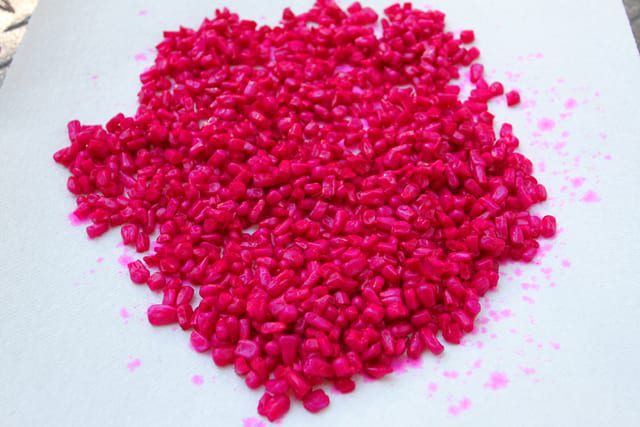Spawn
Kokanee Special: Curing Your Own Corn
By Rick Kennedy | 06/18/2012
For more than 15 years I’ve been guiding for kokanee in California and while a few things have changed when it comes to terminal tackle, one thing hasn’t; we all tip our baits with corn. When I first started everybody made their own corn. And, some still do.
It’s always been a contest to made corn that has been scents than other anglers. And, we’ve tried just about everything. Over the years we’ve added all kinds of concoctions to the corn from maple syrup to brown sugar to anise and garlic. Some work better than others, but most of that is personal preference.
Making your own corn can be a messy, time consuming process. I’m proud to say I don’t do it often anymore. Some of the downsides to making your own corn include the need to keep it refrigerated or cooled and the fact that after the hard work required to produce it, the corn spoils easily.
When Pautzke introduced FireCorn several years back, for some anglers, it was the recipe we’d looked for, for years. Since then, for the most part, I’ve used nothing but FireCorn. However, there’s still a little of that old school desire in me to mix my old concoctions. Creating your own corn can be rewarding. It can be a challenge to come up with a recipe that works and watch it catch fish.
There’s no doubt you can catch fish on plain canned corn. However, adding scent and color enhances the corn to trigged more frequent strikes, while toughening it up too. Color seems to make a big difference. Whether on their bait or dodger, kokanee experts have confidence in pinks, reds and chartreuses, but at times all colors are in demand.

I’ve used countless recipes over the years. However, my most productive recipe is nothing more than a can of white shoepeg corn, Pautzke FireCure and Nectar. It’s a simple, straightforward recipe that anyone can master and yields fantastic results.
Here’s what I do:
Step 1:
Dump one can of white shoepeg corn in a one gallon Ziploc bag. (Do not drain juice.)
Step 2:
Add approximately one tablespoon of FireCure to the bag. (Color varies, by choice.)
Step 3:
Add one-half cup of un-chlorinated water.
Step 4:
Seal the bag, mix it and place in cooler/refrigerator. Leave overnight.

Step 5:
Drain liquid. Place corn on several paper towels. Pat extra moisture off.
Step 6:
Place back in container (Ziploc bag, Tupperware, etc) and add a few teaspoons of red Pautzke Nectar. The corn is ready to fish.

Tips
One of the most important parts of this process is achieve good, vibrant colors. FireCure is serving as our dye. Nectar our scent. You can adjust the color by the amount of FireCure you sprinkle on and how long you leave the corn in the Ziploc with it before you drain the juice out. The more you put in and the longer you leave it in the darker it gets. And, the tougher the corn gets. It’s important to remember that FireCure has sulfites in it and everyone knows how well salmon take to sulfites. That’s another reason why I put the FireCure in my corn.
The only bad part about this process is the limited selection of the colors of Nectar. I use red Nectar because they don’t make pink. For example, there’s four colors of FireCure (red, pink, natural and orange). And, here’s how I utilize them.
Red FireCure = Red Shoepeg Corn
Pink FireCure=Pink Shoepeg Corn
Natural FireCure=Keeps Shoepeg Corn in its’ natural state.
Orange FireCure= Orange Shoepeg Corn

Oftentimes, I invest in colors that aren’t part of this spectrum. And, when I do I turn to natural FireCure. If I want yellow, purple or blue corn I’ll use the natural FireCure and then use yellow, blue or purple Nectar to dye/scent it. For orange I’ll use orange Nectar. Obviously, for the red corn, I’ll use red Nectar.
Why do I use the Nectar? Nectar adds sweetness to the shoepeg corn, which I know kokanee are attracted to. Pautzke Nectar has been used to create feeding frenzies with salmon for longer than I’ve been alive.
Editor’s Note: just because you cure it doesn’t mean you don’t have to keep it cool. Leaving it in warm temperatures for extended periods will spoil the corn and turn it to mush. Thus, keep it cool.






